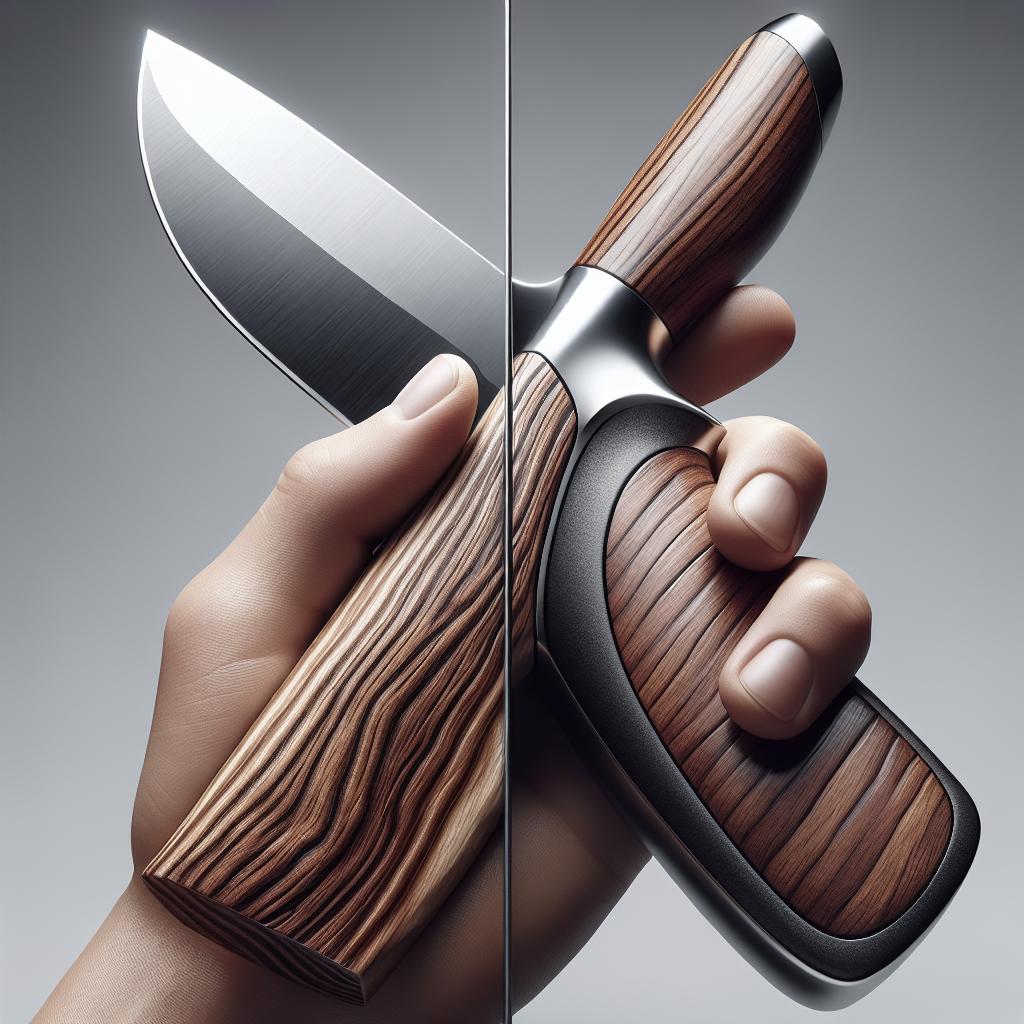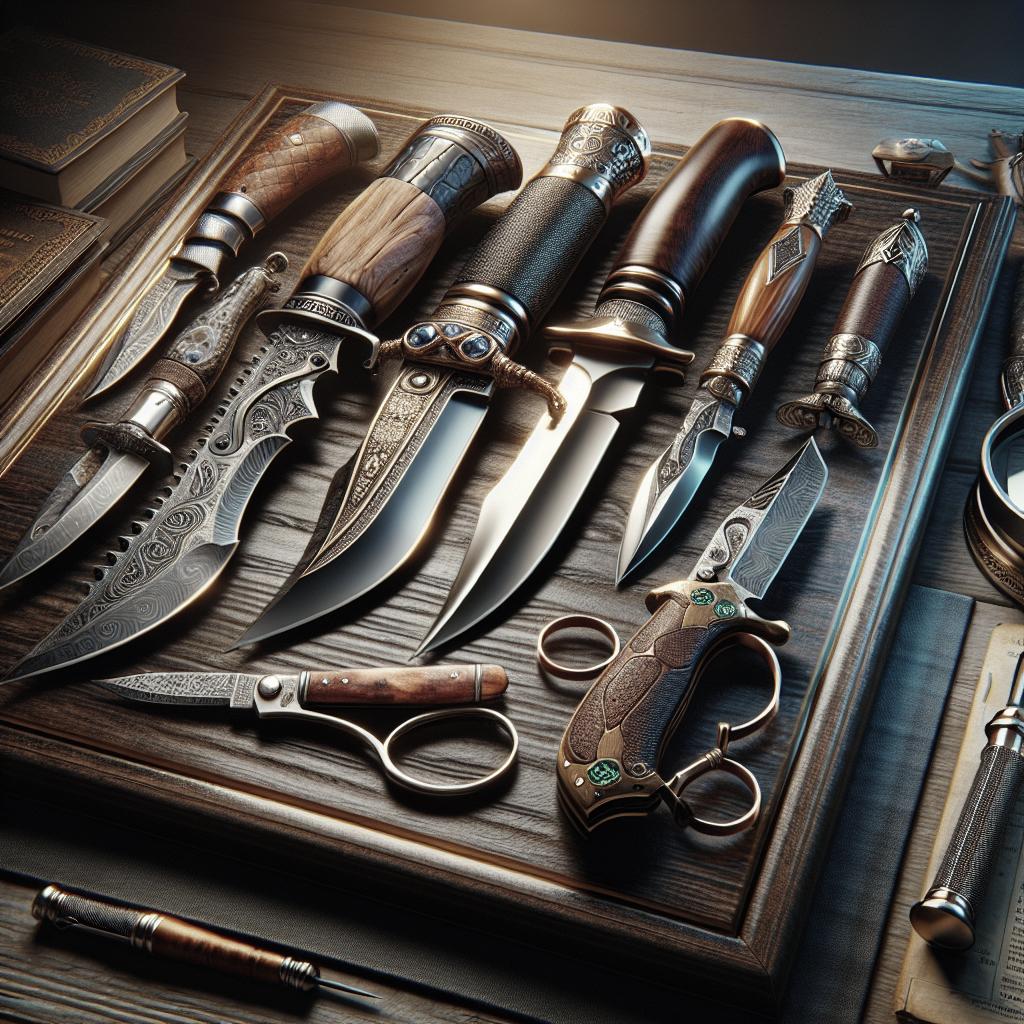Wood vs. Synthetic Knife Handles: A Comprehensive Guide
In the world of cutlery, the debate between wood and synthetic knife handles has long intrigued culinary enthusiasts and professional chefs alike. Each material brings its own unique qualities to the table, from the natural beauty of traditional wooden handles to the advanced durability of synthetic ones. In this article, we’ll delve into the characteristics, advantages, and disadvantages of both types of handles, along with exploring metallic and hybrid options. Whether you’re looking for form, function, or a perfect blend of both, understanding these options will help you make an informed decision.
Traditional Materials: Natural Beauty
Wooden knife handles are cherished for their timeless appeal and traditional craftsmanship. The tactile, organic feel of wood adds warmth and character to a knife, making each piece unique with its distinct grain patterns. Popular woods such as rosewood, walnut, and birch are chosen for their aesthetic qualities and comfortable grip, which improve with use over time.
However, wood has its limitations. Exposure to moisture and extreme temperatures can cause wood to warp or crack, requiring regular maintenance and care to prevent deterioration. Despite these challenges, for those who appreciate the natural beauty and heritage of wooden handles, the extra care is often part of the charm.
Synthetic Fantastics: Tough Yet Tactile
Synthetic materials, such as G-10, Micarta, and carbon fiber, have gained a strong foothold in the knife industry due to their durability and resilience. These materials are engineered to withstand moisture, extreme temperatures, and rough handling without compromising the knife’s integrity. They also come in a variety of colors and textures, offering more customization options.
Despite their impressive strength, synthetic handles sometimes lack the aesthetic appeal and warmth of natural materials. However, for those valuing performance and low maintenance, synthetics provide a practical solution that combines toughness with a comfortable grip.
Metallic Marvels: Strong and Striking
Metallic handles, often made from stainless steel or titanium, are synonymous with strength and modern style. These handles provide excellent balance and heft, making them favored by those who prefer a solid, substantial feel in their hands. The sleek, shiny finish of metal handles can also add a futuristic flair to kitchen cutlery.
On the downside, metal handles can become slippery when wet and are susceptible to scratches. They also tend to weigh more than their wood or synthetic counterparts, which may not be ideal for everyone. Nevertheless, for enthusiasts who prioritize durability and a contemporary look, metallic handles deliver an appealing option.
The Best of Both Worlds: Hybrids that Have it All
Hybrid handles, as the name suggests, combine elements from multiple materials to harness the benefits of each. These innovative designs may feature wood encased in a protective resin or a combination of synthetic and natural fibers, resulting in a handle that is both aesthetically pleasing and functionally resilient.
The hybrid approach seeks to address the limitations of single-material handles, offering improved durability without sacrificing beauty or feel. For those who can’t decide between traditional and modern, hybrids offer a versatile option that captures the best qualities of both approaches.
Final Thoughts: Where Form Meets Function
Choosing the right knife handle material is a personal decision, influenced by factors such as aesthetics, comfort, and practical needs. While wood embodies classic elegance, synthetics offer cutting-edge durability. Metallic handles deliver robustness and a contemporary look, while hybrids aim to provide a harmonious blend of attributes. By understanding these options and what they offer, users can find a handle that best aligns with their culinary style and preferences.
Read More
If you found this article helpful, check out our other content on cutlery choice, care, and culinary tips for both beginners and seasoned chefs. Our goal is to equip you with the knowledge needed to make informed decisions in your kitchen endeavors.
Summary Table
| Material | Advantages | Disadvantages |
|---|---|---|
| Wood | Natural beauty, unique grain, comfortable grip | Requires maintenance, sensitive to moisture and temperature |
| Synthetic | Durable, moisture-resistant, customizable | Less aesthetic warmth, may lack traditional appeal |
| Metal | Strong, balanced, contemporary style | Slippery when wet, prone to scratches, heavier |
| Hybrid | Combines aesthetics and function, versatile | Varies by design, potential for higher costs |


